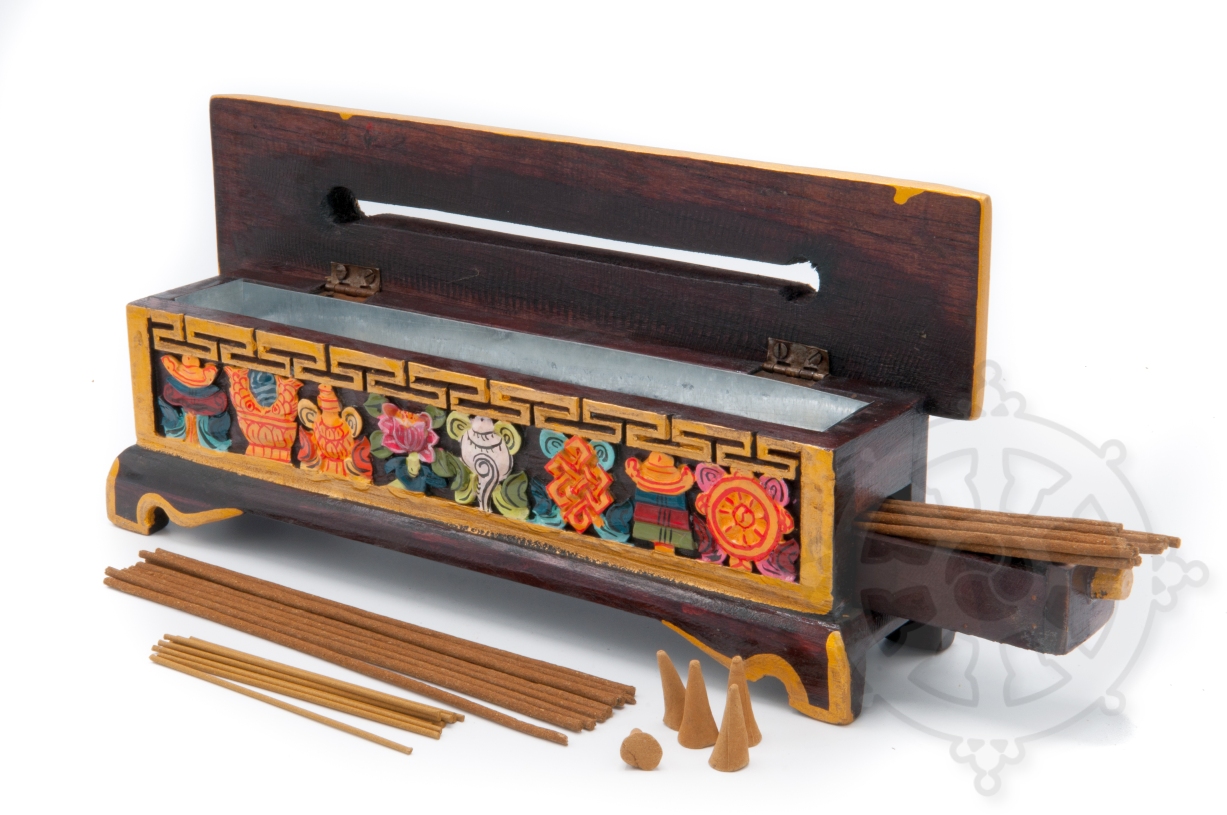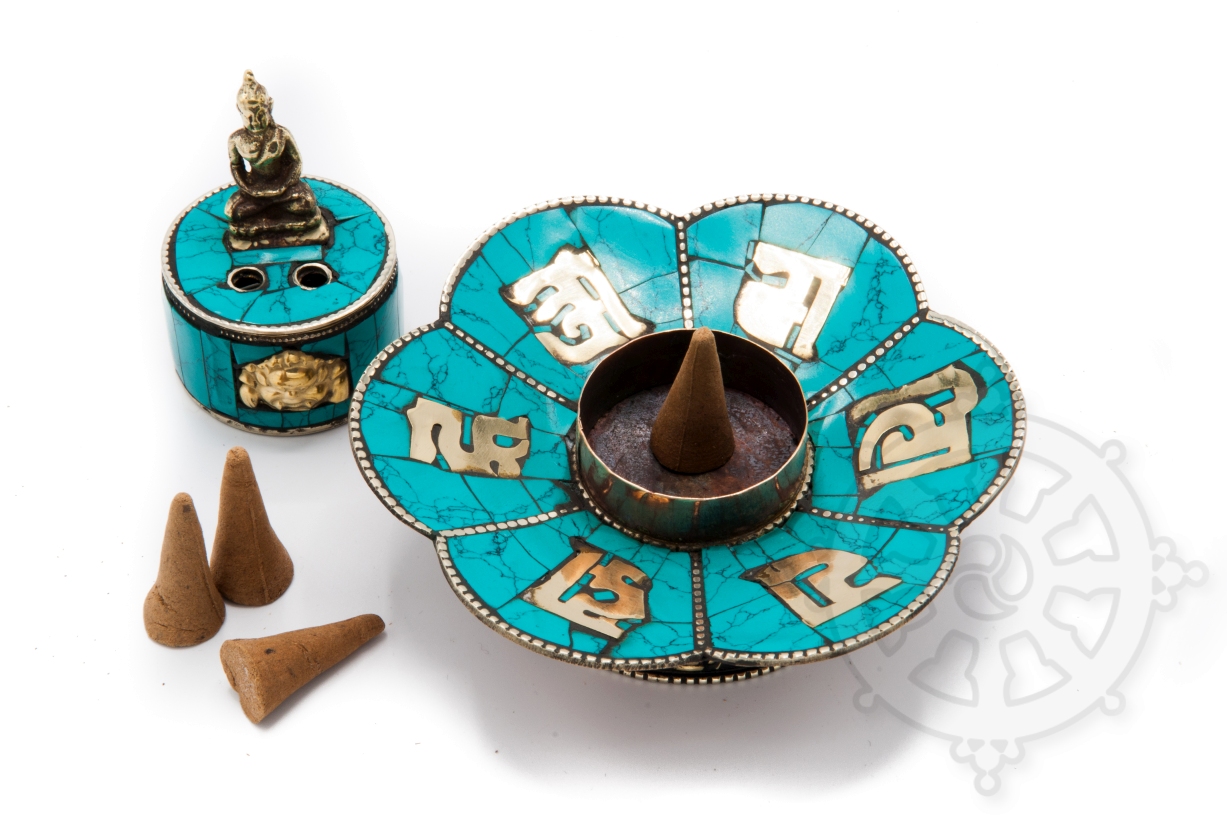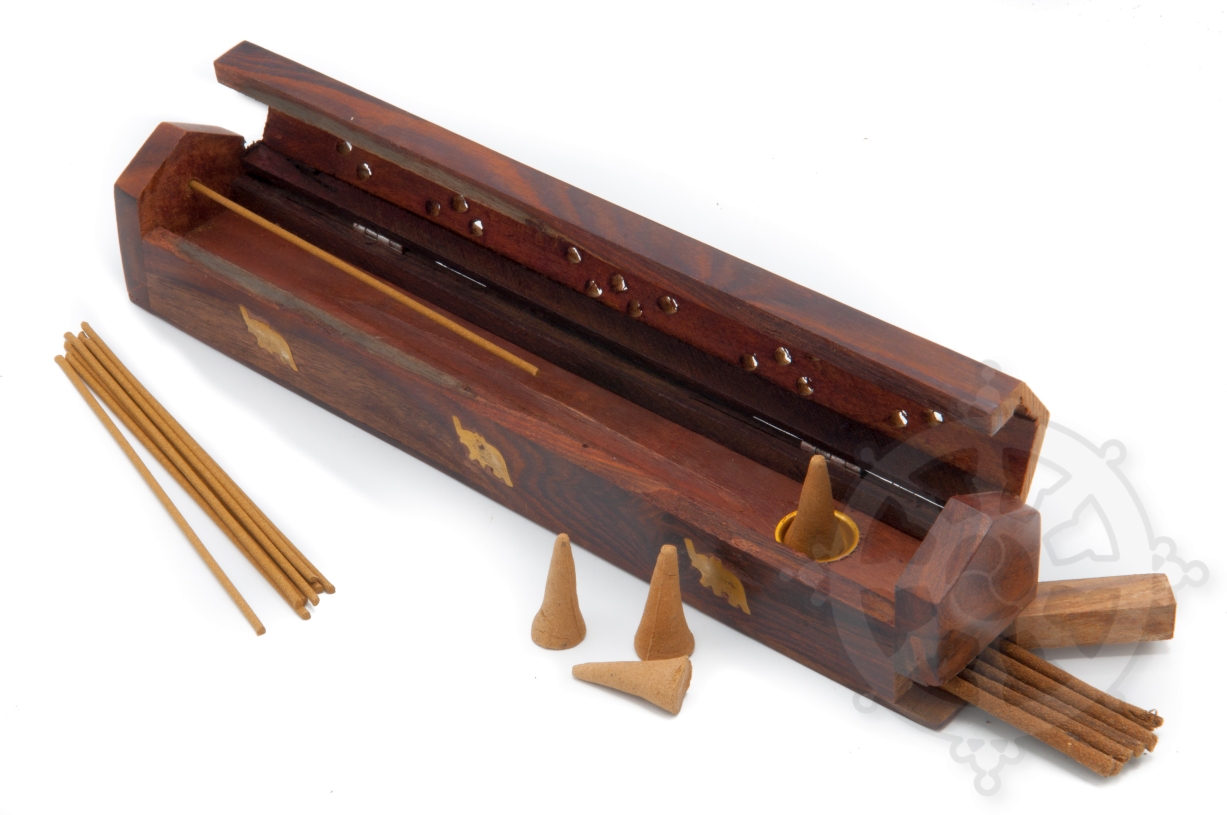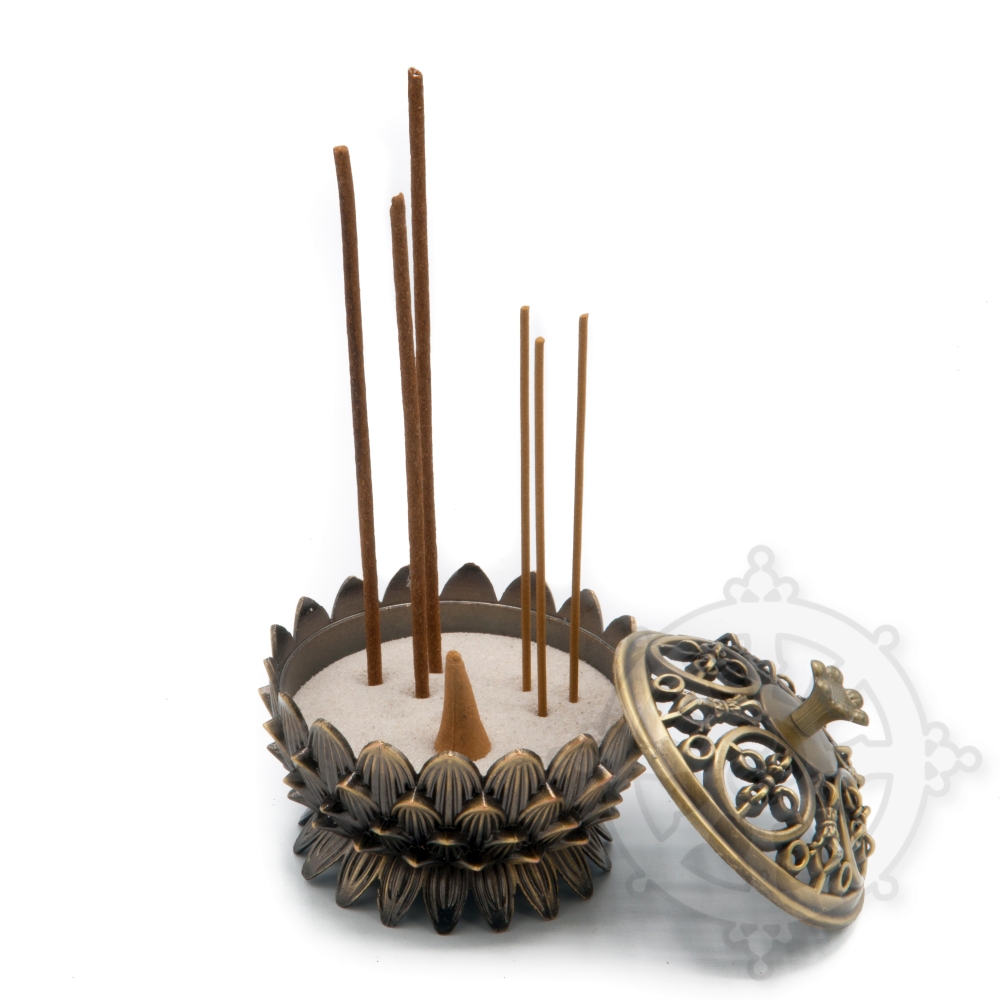Some notes about the Incense Burner
BUY YOUR CENSERS/ BURNERS HERE
1. Definition of a censer or incense burner
A censer or incense burner is a container designed to burn incense or perfume in a solid form.
Incense burners are an ancient tradition and vary considerably in size, shape and material depending on the context of their use and the product to be consumed. They may consist of simple clay bowls, wooden plates, metalwork or finely carved ornaments. In many cultures, burning incense has a spiritual connotation, influencing the design and decoration of the incense burner.
2. Types of burners and combustion
2.1 Direct combustion incense burners
For direct-burning incense, pieces of incense are lit by placing them directly on a heat source such as a match until the incense begins to turn to ash at the burning end. The firebrand is then fed naturally by the ambient air, the incense continuing to burn without any flame.
The incense is then placed in the appropriate burner. If it is a cone, the burner can be a terracotta bowl or if it is a stick, it can be a simple pierced wooden plate or a metal container. The manufacturer will have provided a hole in the burner to hold the stick or a support to hold the incense. The container itself is merely a receptacle for the ashes that have accumulated during the burning of the incense in the burner. However, the model must allow for correct aeration of the incense, ensuring a perfect and regular combustion.
2.2 Indirectly fired incense burners
Indirect burning incense is a blend of aromatic ingredients that are not prepared in any particular way (e.g. mixed with resins to give it a particular shape), making it unsuitable for direct combustion such as sticks. The use of this class of incense therefore requires a separate heat source to act as a fuel. The heat is traditionally provided by charcoal or incandescent embers that are placed in the incense burner. The burning time of this type of incense can vary with the texture of the material (e.g. an assembly of dried herbs, pieces of resin such as Myrrh). Finer ingredients tend to burn more quickly, while coarsely ground or whole pieces may be consumed more slowly.
For domestic use of this type of incense, small concave charcoal briquettes are sold. The corner of the burning briquette is lit, then placed in the incense burner and the flame is extinguished. Once the bright sparks have passed through the entire briquette, the briquette has a temperature of almost 300°C and is ready to receive the incense. The incense is carefully sprinkled onto the briquette and then it begins to burn.
3. Incense burner material
They can consist of simple terracotta bowls, wooden plates, objects from metal craftsmanship or finely carved ornaments.
4. Five tips to choose my incense burner properly
Here are 5 tips for choosing your incense burner.
- Type of incense you wish to consume: depending on the type of incense (stick, cone, powder, rope, etc.), you should choose a burner model that allows quality combustion for your incense. For example, if you wish to burn incense sticks, the boat and box type incense burners will meet your needs. If you use essential oils or powdered incense, bowl burners are recommended.
- The ashtray function: if you are concerned about scattered ashes, you should choose your type of incense and the respective burner carefully. The ash container should also be large enough to avoid emptying it too often.
- Aesthetics and environment where you wish to use your burner: Depending on where you wish to light your incense, for example your office or bedroom, you should choose a burner that suits its environment. It is important to visualise how it fits into the layout of your room.
- The safety of the incense burner : This is the most important aspect. The burner should be resistant to the heat given off by the incense (for example, does a wooden burner contain a small metal box?), it should prevent the incense from escaping from the censer (for example, a stick falling out of the burner).
- The material: There is a wide variety of incense burners that can embellish your pleasure: from ceramics to bamboo, through wood, iron, etc. there are many varieties of incense burners.




